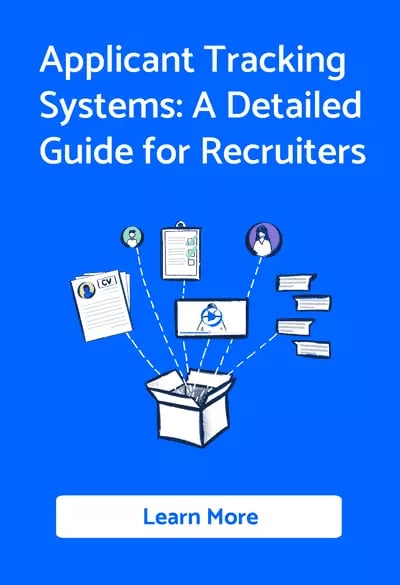Securing seed funding is a crucial step for any startup looking to scale, develop its product, and bring innovative ideas to the market. However, getting seed funding can be a daunting process, especially for new entrepreneurs who are navigating the complexities of pitching, networking, and financial negotiations for the first time. Whether you’re aiming for venture capital, angel investors, or crowdfunding, having a solid strategy in place will significantly increase your chances of success.
In this article, we’ll explore five essential tips to help your startup secure seed funding. From building a compelling pitch to finding the right investors, these insights will guide you on your journey to securing the capital your startup needs to thrive.
For more insights on startup growth and business development, check out GoHire’s guide on hiring employees, which can help you attract the right talent after securing funding.
1. Build a compelling business plan and pitch
One of the most important factors in securing seed funding is having a well-thought-out business plan and a compelling pitch. Investors want to see that you have a clear roadmap for your startup, from identifying the problem you’re solving to outlining your revenue model and growth strategy. Your pitch should not only highlight your product or service but also demonstrate the market potential, competitive advantages, and scalability of your startup.
Key components of a compelling business plan:
- Problem statement: Clearly define the problem your startup is solving.
- Solution: Explain how your product or service addresses that problem.
- Market analysis: Demonstrate the size of the market and target audience.
- Revenue model: Show how your startup will make money.
- Growth plan: Outline your strategy for scaling the business.
- Financial projections: Provide realistic revenue and expense forecasts for the next few years.
When creating your pitch, keep it concise and focused. Investors often have limited time, so make sure your presentation highlights the most important information in a way that captures their attention quickly. You can also tailor your pitch to each investor based on their specific interests and industry focus.
For more tips on how to structure your startup’s team once you secure funding, check out GoHire’s guide to hiring strategies.
2. Leverage your network for introductions to investors
Networking is one of the most effective ways to connect with potential investors. Cold emails and pitch decks sent without prior relationships are often ignored, but a warm introduction from someone in your network can dramatically increase your chances of getting noticed. Reach out to people in your industry, attend startup events, and participate in networking sessions to build relationships with investors or people who can introduce you to them.
Tips for networking effectively:
- Attend industry events: Join startup meetups, pitch events, and industry conferences to meet investors and other entrepreneurs.
- Use LinkedIn: LinkedIn is an excellent tool for finding and connecting with investors. Personalise your connection requests and make sure your profile showcases your startup and its potential.
- Ask for referrals: If you know someone who has previously raised seed funding, ask them to introduce you to their investors or mentors.
- Join accelerator programs: Many startup accelerators provide networking opportunities with investors and often culminate in a demo day where startups can pitch to a room full of potential backers.
Building meaningful relationships takes time, but once established, your network can be a valuable resource for finding investors who are aligned with your startup’s vision.
For more tips on networking and professional outreach, check out GoHire’s guide to powerful LinkedIn messages.
3. Target the right investors
Not all investors are a good fit for your startup. Instead of pitching to as many investors as possible, focus on finding investors who have a history of investing in startups within your industry or those that align with your startup’s mission and values. Research venture capital firms, angel investors, and crowdfunding platforms to find those that have backed startups similar to yours.
How to identify the right investors:
- Industry focus: Look for investors who specialise in your sector, whether it’s tech, healthcare, fintech, or consumer products.
- Stage of investment: Some investors focus on early-stage startups (seed funding), while others prefer to invest in more mature businesses. Make sure the investors you approach are interested in seed-stage companies.
- Values and mission alignment: Seek investors whose values and long-term vision align with your startup’s mission.
- Investment size: Different investors provide different levels of funding. Ensure the investors you approach are capable of providing the amount of seed funding you need.
Being selective with your investor outreach can improve your chances of securing funding from someone who not only provides capital but also brings valuable experience and guidance to your startup.
4. Show traction and early success
Investors want to see proof that your startup has traction and early signs of success, even if it’s still in its early stages. Traction can come in many forms, such as product development progress, user growth, revenue, partnerships, or media coverage. Showing early success demonstrates that there is demand for your product or service and that your team can execute on its vision.
Ways to show traction:
- User metrics: Share user growth statistics, active user numbers, or any relevant engagement metrics.
- Revenue: Even if your startup is pre-revenue, showing early revenue streams or partnerships can make a difference.
- Product milestones: Highlight any major product development milestones, such as launching a beta version or securing partnerships.
- Testimonials or case studies: Provide testimonials from early customers or case studies that show how your product is solving real problems.
Investors want to see that their capital will be used to scale a product that already has momentum. Even if your startup is early in its lifecycle, highlighting any traction can significantly improve your chances of securing seed funding.
For advice on attracting talent once you’ve secured funding and shown traction, check out GoHire’s guide to hiring effectively.
5. Be prepared for due diligence
Once you catch the interest of investors, they will likely conduct due diligence to evaluate your startup’s potential. This process involves reviewing your financials, legal structure, market analysis, and business model to ensure everything is sound. Being well-prepared for due diligence shows professionalism and instills confidence in potential investors.
Steps to prepare for due diligence:
- Organise financials: Have clear and accurate financial records ready, including profit and loss statements, cash flow forecasts, and revenue projections.
- Secure legal documents: Ensure your startup is incorporated correctly and that all legal documents, such as intellectual property agreements, are up to date.
- Demonstrate market potential: Investors will want to see evidence that there is demand for your product or service, so be prepared to share your market research and customer insights.
- Prepare your team: Investors may want to meet key members of your team to evaluate their expertise and commitment to the startup.
By being well-prepared, you can expedite the due diligence process and reduce the risk of losing investor interest due to disorganisation or incomplete information.
What is seed funding?
Seed funding is the initial capital raised by a startup to help develop its product, hire staff, and grow the business. It is often the first formal round of investment and typically comes from angel investors, venture capital firms, or crowdfunding.
How much seed funding should I aim for?
The amount of seed funding you need will depend on your startup’s development stage and growth goals. It’s common for startups to raise anywhere from £100,000 to £2 million in seed funding, though the amount varies widely by industry and location.
How long does it take to secure seed funding?
The process of securing seed funding can take several months, from initial investor meetings to closing the deal. The time frame depends on factors like investor interest, due diligence, and negotiation terms.
Can I raise seed funding through crowdfunding?
Yes, crowdfunding is a popular way to raise seed funding, especially for startups that have a product with mass-market appeal. Platforms like Kickstarter, Indiegogo, and Seedrs allow startups to raise money directly from the public.
What should I include in a seed funding pitch?
Your seed funding pitch should include a clear problem statement, your solution, market analysis, revenue model, growth strategy, and financial projections. Keep the pitch concise and tailored to the investor’s interests.





